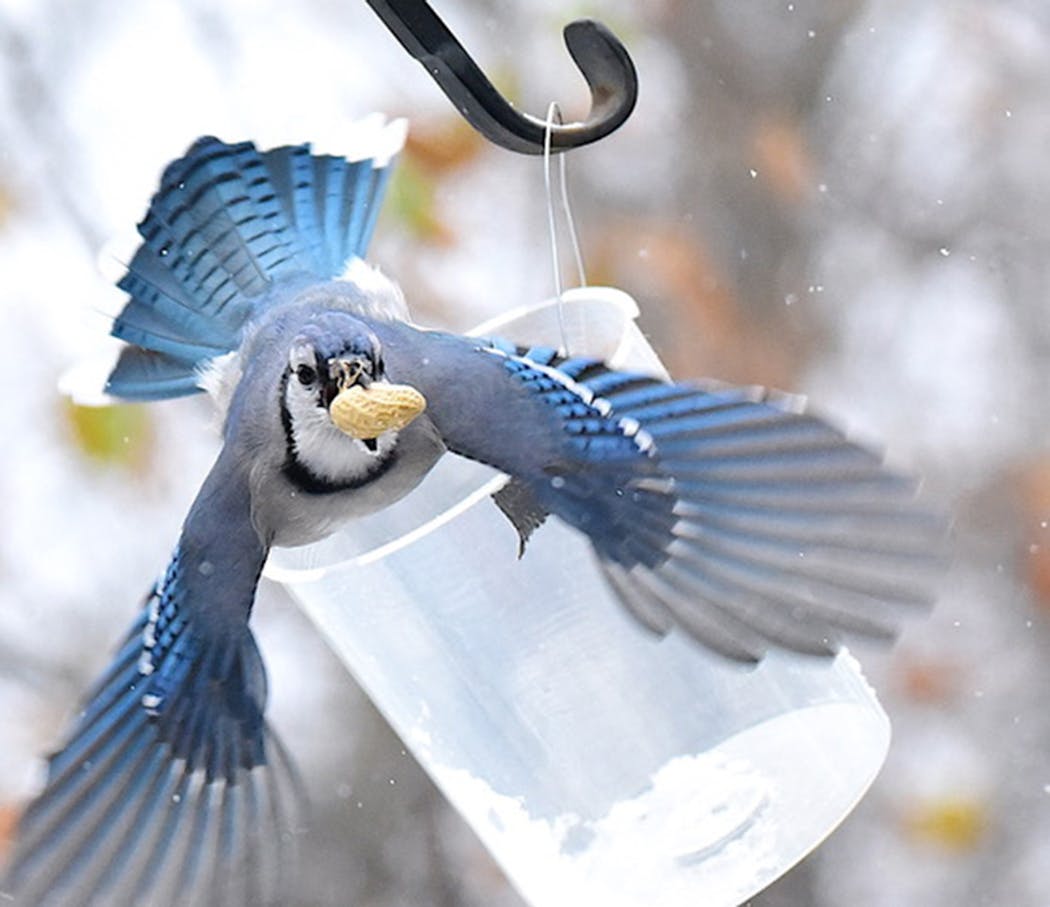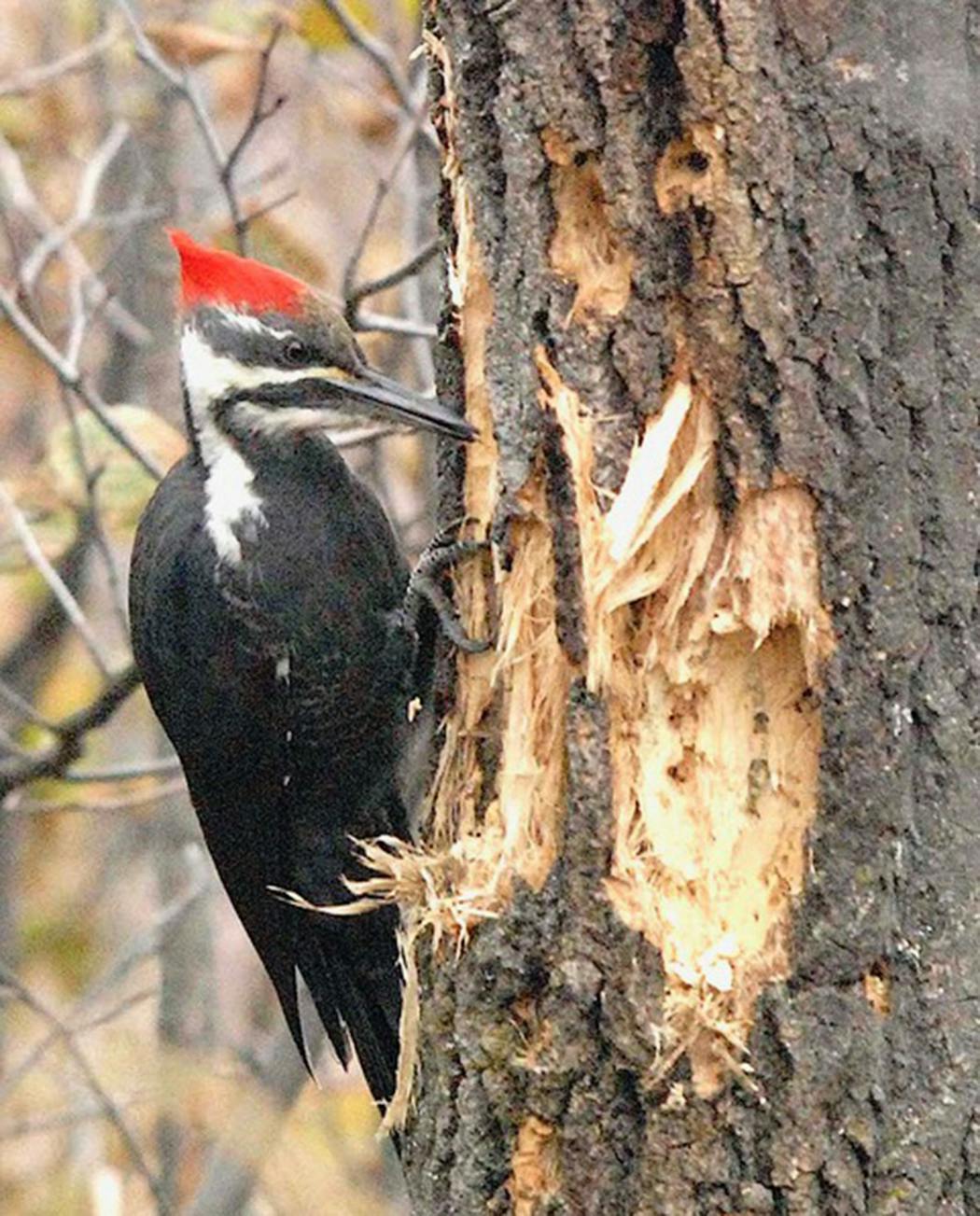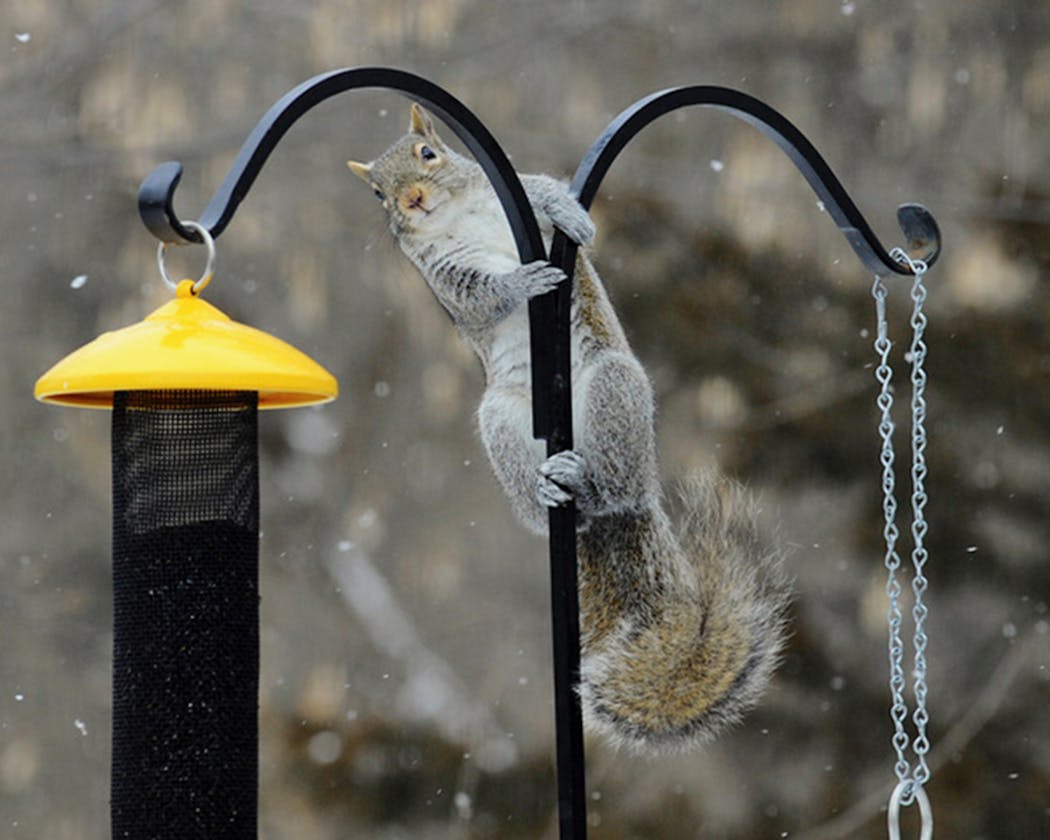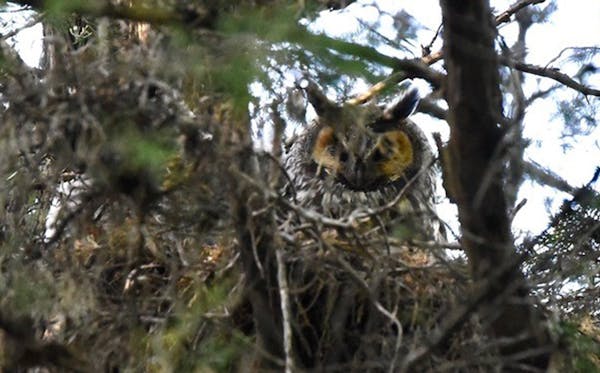Q: An odd thing is happening on a nearby pond: A hooded merganser seems to think a mallard hen is his mate and aggressively chases off any mallard males, even diving underwater like a submarine to come up under them to scare them away. Even though the hoodie is much smaller, that strong bill strikes fear in the mallards. I wonder if he wants to mate with the female mallard or is just being protective?
A: I've seen some disturbing behavior between mallards in the spring (forced copulation), but never this kind of interaction between two different species, so I asked Steve Cordts, a waterfowl staff specialist for the Minnesota Department of Natural Resources, for his perspective. He noted that he's often seen different species interact, usually involving chases if one species happens to swim too close to another. But this example has him scratching his head: "I don't have a good explanation for why the hooded merganser chases the drake mallards," he said. "Ducks can hybridize with other species, but to my knowledge hooded mergansers have only hybridized with other cavity nesters, like common mergansers, red-breasted mergansers, buffleheads, goldeneyes and wood ducks." He agrees that the merganser's serrated bill can be intimidating. It would be interesting to see what develops in this situation.
Birds having fun
Q: Watching birds around my backyard over the years triggers the thought that birds sometimes are having fun, that they do things just for the enjoyment of them. What do you think?
A: I loved your question and I think it's becoming clear that birds do engage in activities solely for the joy they bring. Where we used to believe that all bird activity was related to the serious business of staying alive and raising a family, we now see that birds sometimes do frivolous things, apparently just for fun. This is especially true of big-brained birds like crows, ravens and blue jays. There are online videos showing crows sliding down snowy hills and rooftops and ravens flying high to drop sticks, then diving down to catch them before the sticks hit the ground. I once watched a crow and four young kestrels playing what looked like a game of tag around a baseball diamond in a local park. And then there was the red-tailed hawk I saw floating down the Mississippi River on an ice floe, then flying back upriver to find another floe to float back down on. The hawk repeated this over and over, seemingly for the fun of it.
Night thieves
Q: On two nights last week my bird feeder was cleaned out from full to empty. We live in a close-by suburb with tree-lined streets but this is a mystery.
A: This sounds to me like the work of flying squirrels, among nature's most engaging creatures. Several years ago, a group of five of these small rodents showed up each evening to empty the safflower feeder in my backyard. Once I started leaving whole peanuts for them, they left the feeder alone. Some people don't like having flying squirrels around, but it was a sad day for me when they moved on.
Branching out
Q: I've been watching a great horned owl nest not far from home, and wonder when the owl youngsters leave the nest.
A: I always enjoy contacting Karla Bloem, the-very-knowledgeable-about-owls executive director of the International Owl Center in Houston, Minn. She says that owlets step out of their nests at about 5 to 6 weeks of age, although she notes that there's a great deal of variation in the timing. The young owls are called "branchers" at this stage because they perch on branches near the nest.
The daily grind
Q: I watched a blue jay swallowing whole peanuts. How is the nut broken down in its digestive tract?
A: There are two possible scenarios here: Either the jay was packing peanuts in the shell to carry away to hide for later consumption, or it was gobbling shelled peanuts and storing them temporarily in its throat pouch. This expandable part of its esophagus allows it to pack in peanuts, then fly to a branch to cough them up and break them, one by one, into small pieces with its beak. Then it swallows them and its gizzard grinds them up further, before they head down the digestive tract.
Sap seeker?
Q: A pileated woodpecker landed on a basswood tree on my boulevard and began to drill into the bark. It would then lean back its head before continuing to rip off chunks of bark. It looked like it was drinking and I'm wondering whether woodpeckers drink tree sap.
A: That's an interesting question but I'd suspect that your pileated was looking for insects. It may have heard beetle larvae moving around under the bark, or discovered a chamber of dormant carpenter ants (these are a favorite food of this woodpecker). Pileateds often pause in their drilling and lean back in the way you described, maybe to take a rest, maybe to survey their work. However, if you see more signs of this bird's drilling and detect any moisture around its drill site, you may be right about the bird seeking sap.
Help with I.D.
Q: I just started feeding birds and enjoy watching those that come to my feeders. But how do I tell what kinds of birds they are? I recognize some, but not many of them.
A: I agree, it can be a challenge to use a field identification guide if you don't know what you're looking for. Luckily, in this digital age, there are two useful apps that can answer identification questions, and they're both free at the App Store or on Google Play. The first is Merlin, an easy-to-use app produced by the Cornell Lab of Ornithology. Once downloaded, it will guide you toward identifying a bird, either by having you describe color, size and behavior or by downloading a photo.
The other is called Seek by iNaturalist, which uses image recognition technology to identify plants and animals. And then there's the old-fashioned way, which is to begin by purchasing a good field guide to birds. Page through its illustrations often, to give yourself a feel for the many kinds of birds outside and prepare you for seeing new species.
Bad berries?
Q: Several years ago I planted chokeberry bushes because I read that birds love the berries, but the berries go to waste. Did I plant them in the wrong location (alongside the house) or do birds not like these berries?
A: I'd say the problem is that birds don't like these berries. I planted several chokeberry shrubs some years ago, noting that the nursery tag said "Birds love these berries" but, like you, I noticed that no birds (or any other creature) ate the berries. I see these shrubs in some parks and they're still full of berries at the end of winter. So I'd recommend taking out those shrubs and replacing them with known bird pleasers, like dogwood shrubs.
Squirrel wars
Q: The squirrels are being relentless this year and I'm almost ready to quit feeding birds, because most of the food is going to squirrels. How can I keep them out of my feeders?
A: Squirrels are persistent pests around feeding stations, in many cases dominating feeders and gobbling up all the seed. I'm not a big fan of feeders marketed as "squirrel proof," because squirrels continue their assaults on them and while squirrels are around birds stay away. Here's a description of the system in my backyard and I have never, ever, seen a squirrel in a feeder:
You need an 8-foot metal pole with hanging hooks for feeders, and a squirrel baffle placed around the pole to prevent squirrels from climbing up (this could be the "witch's hat" kind or even something like a garbage can lid with a hole drilled into it). Then you need to plant the pole where you'll be able to enjoy the view from the house, but at least 15 feet from any structure or tree — squirrels can jump high and wide and drop down from trees. Hang your feeders from the hooks and sit back and enjoy the birds. Squirrels will still gather to glean seeds that drop to the ground, but they won't be able to get into the feeders.
Note to readers
What's the best present you can give to birds this year, and in the years to come? It's keeping your cat(s) indoors. I think we all know that cats take a terrible toll on birds, killing many hundreds of millions each year and these deaths are entirely preventable, if cats aren't free to roam the neighborhood. For those of you who swear that your cat never kills birds, there are studies that show this simply isn't true — all cats roaming outdoors kill birds. So, at a time when there are so many threats to nearly all bird species, give the birds on your block a gift by keeping your cat in the house.
St. Paul resident Val Cunningham, who volunteers with the St. Paul Audubon Society and writes about nature for local, regional and national newspapers and magazines, can be reached at valwrites@comcast.net.





